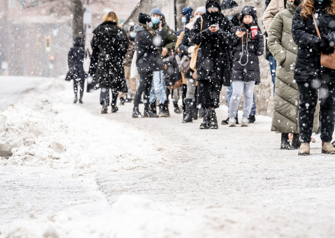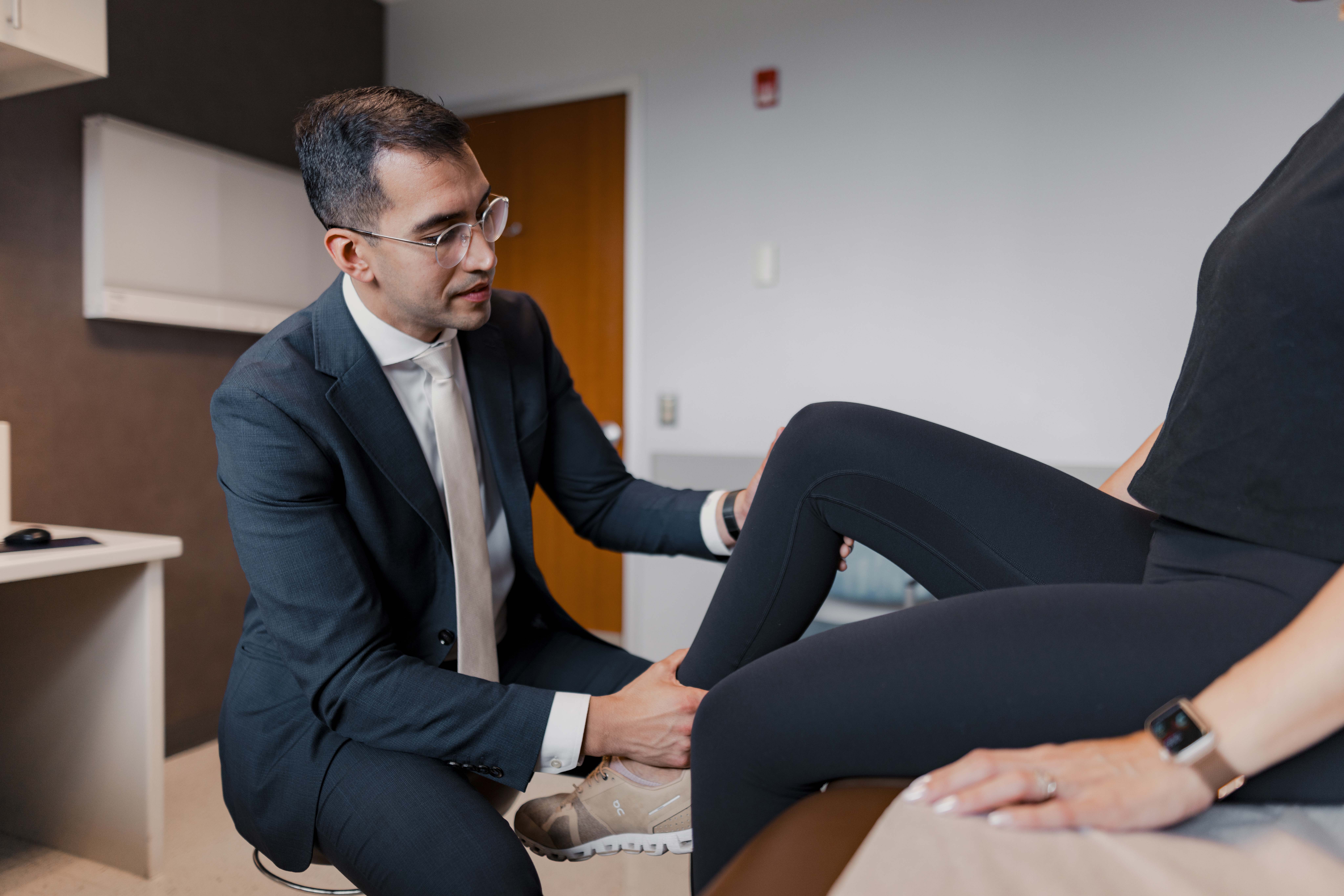
News
Winter Safety Tips
Date posted: 12/22/2022
Last updated: 12/22/2022
Table of Contents
December 22, 2022
The holiday season is upon us. Homes and stores decorated with seasonal décor. Shopping lists take multiple pages. Airports and roads are jammed with families and friends coming together to celebrate the season. And, of course, winter weather.
With the first major winter storm warning upon us, there is no better time for a quick refresher on how to enjoy the season safely.
Snow Shoveling
Remember that shoveling snow requires a lot of exertion. In fact, the approximate output is 6.0 METS which is more than kayaking, doubles tennis, and ice skating. We frequently warm up and train for those activities to prevent injury and perform better. But when the snow accumulates, we generally roll right out of bed, throw on some cold-weather clothes and start heaving loads of powder. This is a recipe for strains/sprains, especially to the low back, as well as heart attacks and other cardiovascular events.
Solutions
Treat snow shoveling like any other form of moderate exercise. Do a 5-10 minute warm-up that elevates your heart rate and takes you to near sweat. Also add plyometric stretches (Think stretching while moving, ie lunges, high knees, etc).
If you are over the age of 50, do not exercise regularly or have a history of any cardiac issues, check with your physician before shoveling snow. Occasionally an EKG or stress test should be done to ensure you are safe to take on that exertion.
Ice
The dreaded fall on ice. This is one of the most common presentations to an emergency room or orthopedic office in the winter. These falls are associated with wrist and hand fractures, head injuries, and a plethora of contusions.
Solutions
Pay attention. The distractions we get away with during the summer months, such as looking at our phones or trying to carry one too many groceries, come back to haunt us when the ground is slick. Many falls could be prevented by just paying attention to our surroundings. We also need to go a little slower during these conditions.
Wear appropriate shoes. Boots and winter shoes are designed to have better traction. Walking in a parking lot with oxfords that have no tread leaves you very little forgiveness when you meet a patch of ice.
Put salt, sand or kitty litter on areas where you will walk to melt ice and provide traction.
Cold Temperatures
Most of us who have lived in the Great Lakes are familiar with subzero temperatures and wind chills. Remember that the thermometer does not give a true depiction of the actual temperature. With whipping winds and cold temperatures, the risk of frostbite and hypothermia can increase dramatically, sometimes in as little as a few minutes if not appropriately dressed.
Solutions
Dress appropriately. The obvious garments like winter coats and hats are important but don’t forget about warm gloves, socks, and shoes. The body shunts blood away from the extremities in cold temperatures, prioritizing the warmth of your major organs at the center of your body. Without proper protection, the fingers and toes are very susceptible to frostbite.
Follow the weather reports. We all know the running joke about how often the weather person is wrong. While that may be the case, generally the weather report is pretty accurate when predicting temperatures and wind chills. These two numbers are crucial for preparation, especially for outdoor activities.
Heating
In addition to having your HVAC systems annually inspected and maintained, it is important to remember that gas-based heating can be dangerous, especially for carbon monoxide poisoning. This is a byproduct of heat and is odorless. Heating elements, such as space heaters, also fire risks.
Solutions
Install carbon monoxide detectors on each level of your home and ensure you test them monthly.
Inspect space heaters for any damage to the electrical cord or heating elements. Unplug them when not in use and never leave them on while you are away and can not monitor them.
In the case of very low temperatures, ensure any pipes that are exposed to outside walls have access to the heat of your home and you leave the faucet with a slow drip. Opening cabinets under sinks can aid in this as well.
Winter Driving
Car accidents and malfunctions are one of the leading causes of injury and death in the winter months. Slick conditions combined with freezing temperatures are a setup for potential problems.
Solutions
Prepare your car for winter conditions. Make sure the tires have enough tread for grip. Pack emergency supplies such as jumper cables, or even better a portable car jump starter which often also has the ability to plug in electronics. Salt or sand can add traction to the ground if you are stuck.
Drive responsibly. We are all in a hurry and never want to be late or be stuck in the car longer than we must. But driving slower with more control can be life-saving, for you and other drivers. Take a deep breath and know that arriving late is better than not arriving.
Neighbor Safety
This is a good time to check in with your neighbors, especially those who are elderly or who have disabilities. Offer to help them with their walkways/driveways, heating safety, and essentials such as groceries. It is also a good time to alert neighbors you trust of any upcoming travel or time away so they can monitor the home while you are away or assist with preventing pipes from freezing.
Illnesses
I am sure we are all well-versed in the concept of viruses at this point, but winter is the preferred environment for common colds and flu.
Solutions
If experiencing symptoms, such as cough, sore throat, sinus congestion, fevers, or chills, it is in the best interest of you and your peers to remain home and away from other people. Even if the COVID test is negative, you can still be contagious and it is not the best idea to expose others.
Consider wearing a mask if you are in public places and washing your hands frequently, as these both decrease your risk of transmission or acquiring viruses significantly.
Get your annual flu shot and appropriate COVID boosters. Both decrease your risk of getting very sick and can shorten the length of the illness if you do. We all can agree that a few fewer days of feeling awful would be lovely.
While there are plenty of other ways the winter can present safety concerns, hopefully, this list is a good reminder of the essentials. Please stay safe through this first winter storm and the rest of the season. We wish you a happy holiday season and are always here for your winter orthopedic injuries should they occur.
About Jeremy A. Alland, MD
Dr. Jeremy Alland graduated from Rush Medical College in Chicago, IL, where he was awarded the prestigious William H. Harrison, PhD Award for selfless leadership, aspiration and collaboration. He is board certified by the American Board of Family Medicine and is a member of the American Medical Society of Sports Medicine, American College of Sports Medicine and American Academy of Family Physicians.
Dr. Alland is a team physician for the Chicago Bulls, Chicago White Sox, Chicago Fire Soccer Club, Chicago Dogs, Chicago Blaze, Chicago Wildfire (Ultimate Frisbee), Chicago City Soccer Club and Mount Carmel High School.


